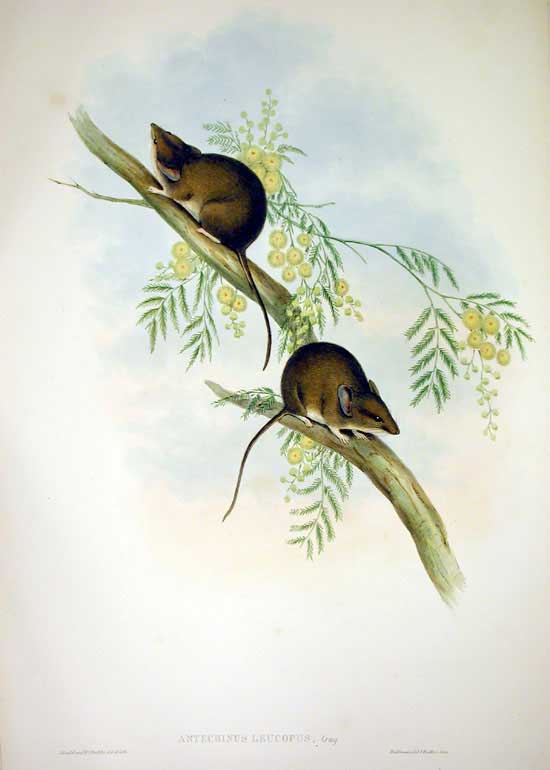|
| 질의: Mammal | 결과: 2284번째/3457 | |
White-footed Dunnart (Sminthopsis leucopus) - Wiki
| 제목: | White-footed Dunnart (Sminthopsis leucopus) - Wiki
| |

| 해상도: 550x770
파일크기: 25890 Bytes
등록시간: 2007:08:10 15:29:41
|
White-footed Dunnart
From Wikipedia, the free encyclopedia
[Photo] Source: "Mammals of Australia", Vol. I Plate 35 Part of the 3 Volumes by John Gould, F.R.S. Published by the author, 26 Charlotte Street, Bedford Square, London, 1863
The White Footed Dunnart (Sminthopsis leucopus) is a marsupial that occurs of Tasmania and Australia. It occurs along the coast and in inner Gippsland and Alpine areas up to 400 metres near Narbethong. The length from snout to tail being 140-200 mm of which head to anus is 70-110 mm and tail 70-90 mm long and with a weight of 19-27 g.
Habitat
The average rainfall of its habitat is between 600-1000mm per year. Unlike the Fat-tailed Dunnart, this species requires forest and woodland cover of more than 50% of any square metre of heath understory or mid-story plant species. Other habitats include coastal tussock grasslands, sedgeland and wet heath. This dunnart has an individual range of about 120 square metres for both sexes, although this varies greatly among males, with some males acquiring territories of up to 1200 square metres. Male territories often overlap those of females.
Breeding and social organisation
The White-footed Dunnart breeds from July to August and births late August to September. Males are semelparous, dying about one month after the birth of the young, and females may also only reproduce once in their life. About ten joeys are born and remain in the pouch for 8 weeks.
Diet
The feeding habit of this 20-30 gram species is similar to that of other dasyurids; it is an opportunistic feeder. Diet consists of invertebrates and reptiles of between 1 and 18 mm in length.
http://en.wikipedia.org/wiki/White-footed_Dunnart
| The text in this page is based on the copyrighted Wikipedia article shown in above URL. It is used under the GNU Free Documentation License. You may redistribute it, verbatim or modified, providing that you comply with the terms of the GFDL. |
|
^o^
동물그림창고 똑똑전화 누리집
^o^
|
|